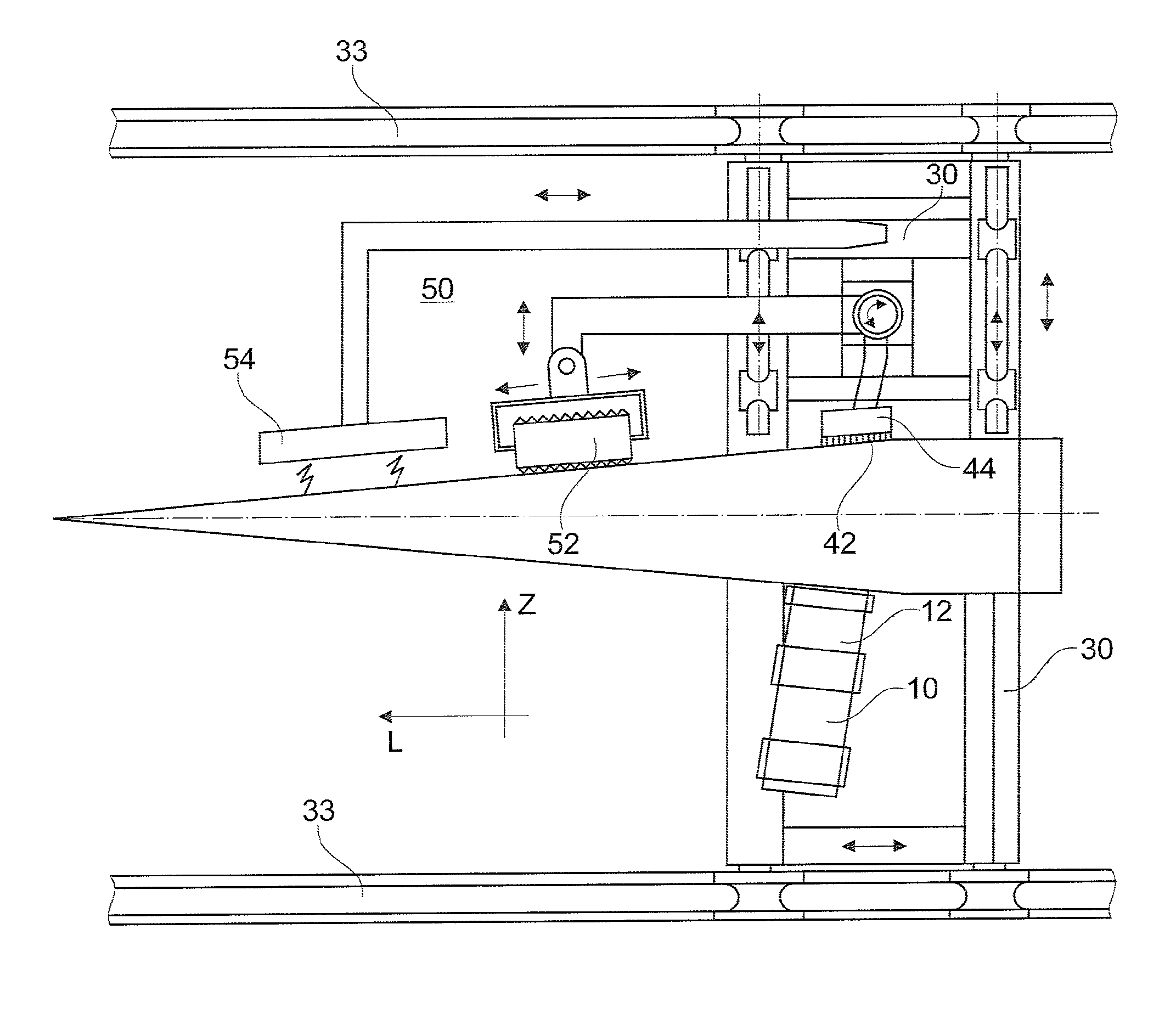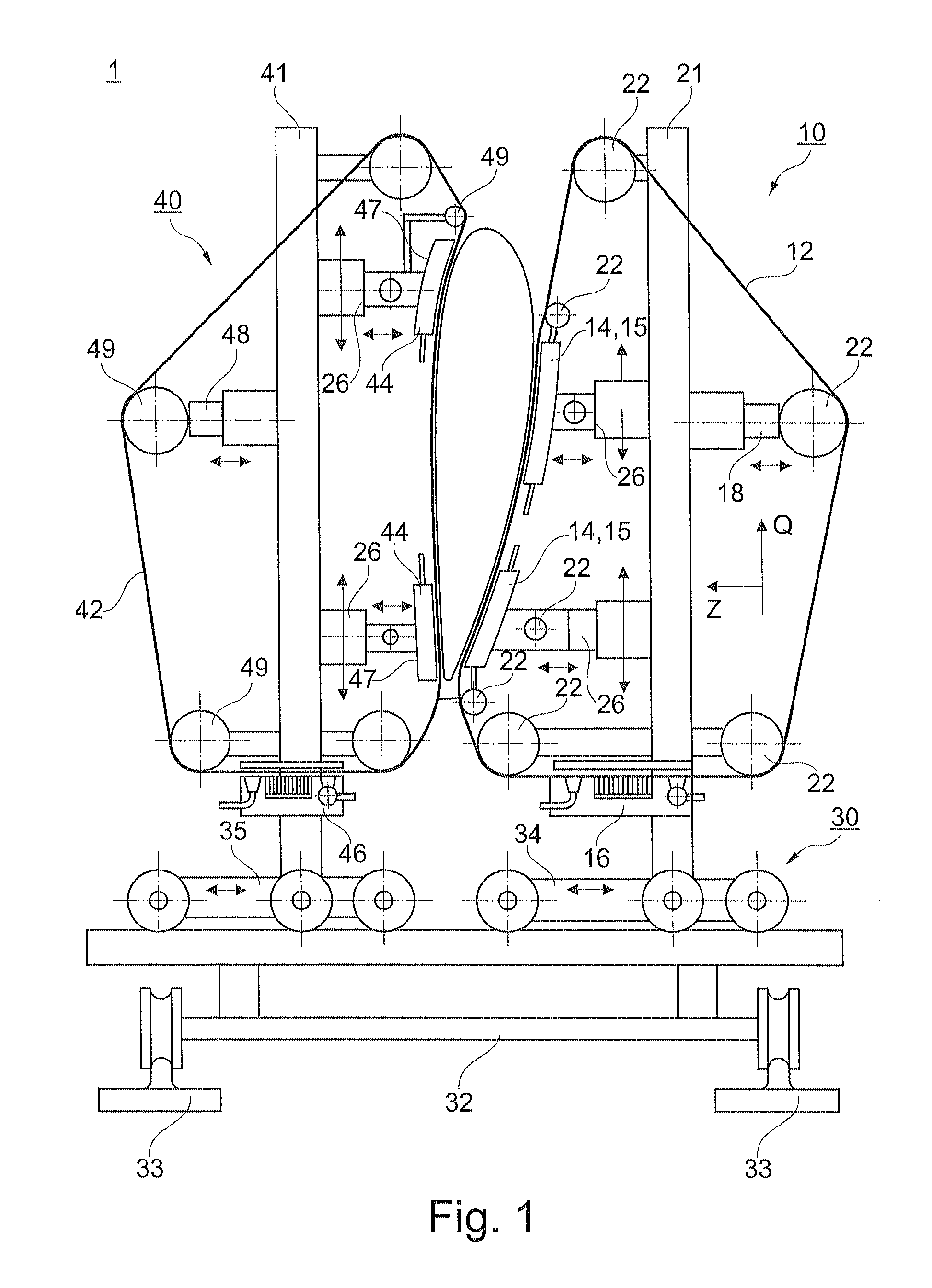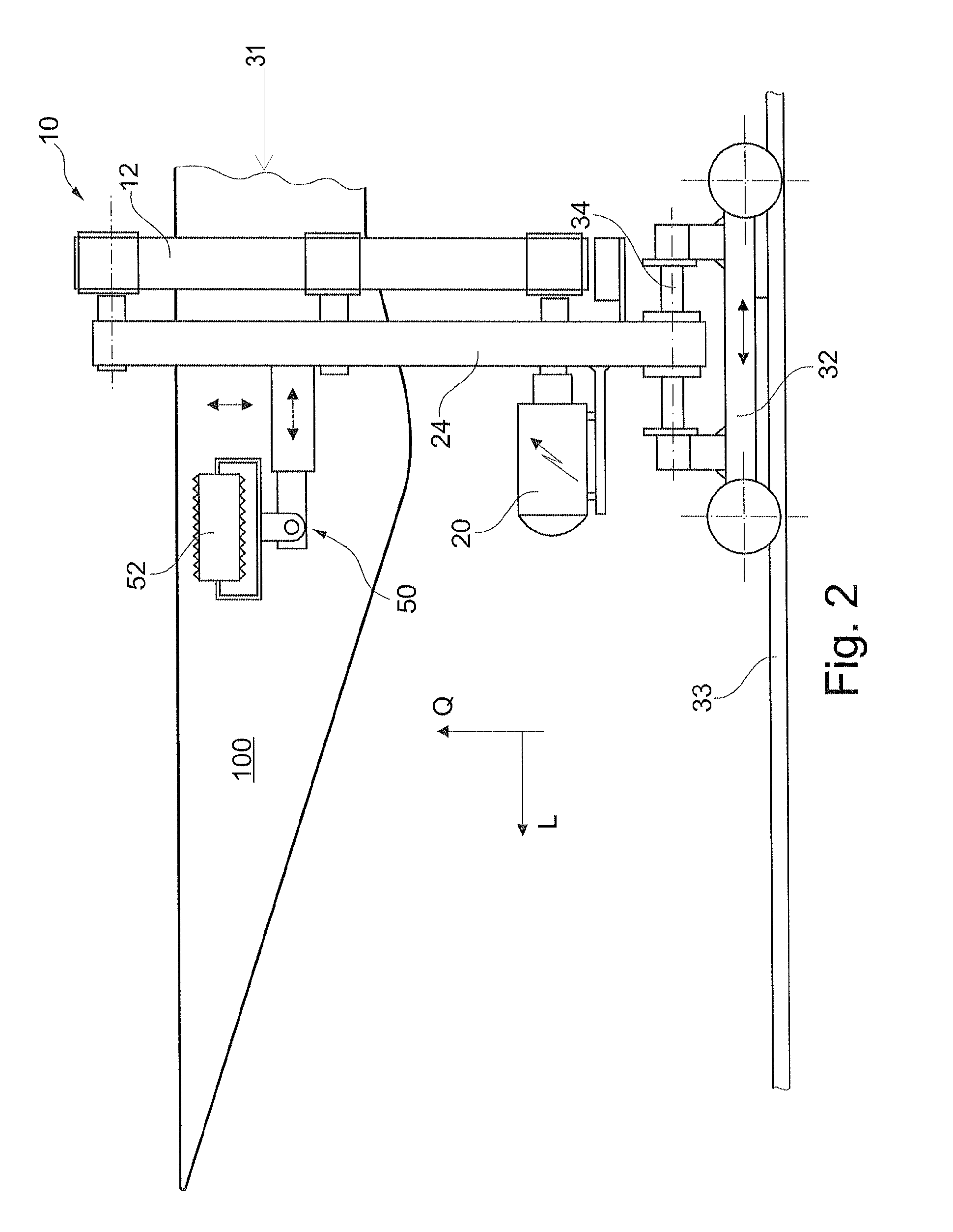Grinding device for machine based grinding of rotor blades for wind energy systems
a technology of wind energy system and grinding device, which is applied in the direction of application, coating, information storage, etc., can solve the problems of high load on the parts, in particular the rotor blade of a wind energy system, and the processing of the rotor blade is very human-resource-intensive, so as to reduce the overall processing reduce the risk of clogging the grinding belt, and reduce the transport time of the rotor blad
- Summary
- Abstract
- Description
- Claims
- Application Information
AI Technical Summary
Benefits of technology
Problems solved by technology
Method used
Image
Examples
Embodiment Construction
[0038]In the following, preferred embodiments of the invention are described with reference to the figures. Individual features of the embodiments described herein may be combined with other embodiments of the invention.
[0039]FIG. 1 shows a side-view of a grinding device 1 for the machine-based grinding of rotor blades 100. In FIG. 1, a belt grinding unit 10 is arranged at the right-hand side of the rotor blade 100, the belt grinding unit being able to grind with a circulating grinding belt 12 a surface 110 of a rotor blade 100 of a wind energy system. As shown, the circulating grinding belt 12 is guided by means of guide rollers 22 that are attached to a base body 21 of the belt grinding unit 10. The drive of the grinding belt 12 is carried out via a controllable electric motor 20 that determines the grinding speed. In order to provide always the necessary tension to the grinding belt, the belt grinding unit 10 is equipped with a belt tensioner 18 that acts on the belt 12 via a gui...
PUM
 Login to View More
Login to View More Abstract
Description
Claims
Application Information
 Login to View More
Login to View More - R&D
- Intellectual Property
- Life Sciences
- Materials
- Tech Scout
- Unparalleled Data Quality
- Higher Quality Content
- 60% Fewer Hallucinations
Browse by: Latest US Patents, China's latest patents, Technical Efficacy Thesaurus, Application Domain, Technology Topic, Popular Technical Reports.
© 2025 PatSnap. All rights reserved.Legal|Privacy policy|Modern Slavery Act Transparency Statement|Sitemap|About US| Contact US: help@patsnap.com



